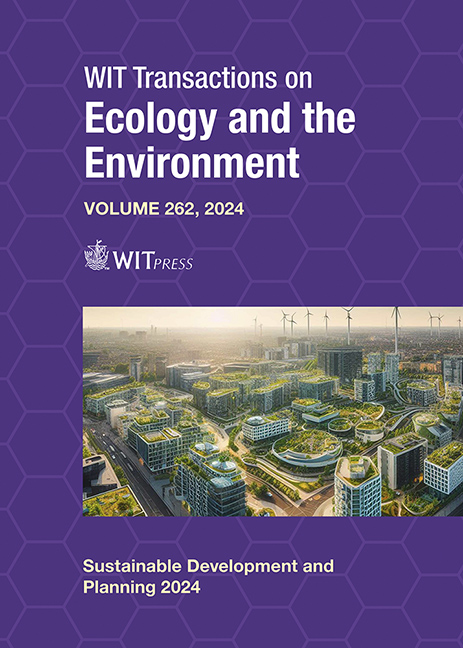REVIEW OF AGRICULTURAL CADASTRE APPROACHES USING GEOMATICS FOR RURAL DEVELOPMENT
Price
Free (open access)
Transaction
Volume
262
Pages
14
Page Range
465 - 478
Published
2024
Paper DOI
10.2495/SDP240391
Copyright
Author(s)
PAULO ESCANDÓN-PANCHANA, SANDRA MARTÍNEZ-CUEVAS, MARÍA JAYA-MONTALVO, GRICELDA HERRERA-FRANCO
Abstract
The agricultural cadastre plays an essential role in land administration systems because it achieves the spatial integrity of farming parcels, guaranteeing food security, agricultural production and land tenure. The development of the urban–rural agricultural cadastre links technological advances with the use and integration of geomatic tools in its planning. However, problems include tenure vulnerability, land disputes, illegal settlements, little resource information (crop/water/soil) and territorial information. Spatial development differs between developed and emerging countries in urban and rural areas. This study analyses advances in agricultural cadastre development by reviewing scientific documents in Scopus and Web of Science, which use geomatics in various agricultural regions for rural development. The methodology consists of: (1) search strategy and studies selection; (2) multiple correspondence analysis with RStudio; and (3) interpretation and findings of agricultural cadastre developments using geomatics. The Czech Republic, Poland, Slovakia, Spain and Russia contribute the most to agricultural cadastre development. Thematic trends focus on land consolidation projects and cadastral estimation/ evaluation of agricultural land (23%), topology/use/management of agricultural territory (19%) and abandoned agricultural land spatial identification, suitability/inventory of the territory and agricultural landscape (12%). In addition, other less frequent uses contribute to property and tax administration, forest management, agricultural reorganisation and farm products cadastre. These studies seek to improve agricultural conditions, increase the agricultural operations profitability, crops spatial planning and rural reorganisation through projects that automate cadastral activities using geomatic tools such as geographic information systems (ArcGIS, QGIS, ArcMap), Remote Sensing (SPOT, Sentinel 1-2, Ikonos, Landsat 7-8) and remotely piloted aircraft system (unmanned aerial vehicles).
Keywords
agricultural cadastre, rural development, geomatics, multiple correspondence analysis





